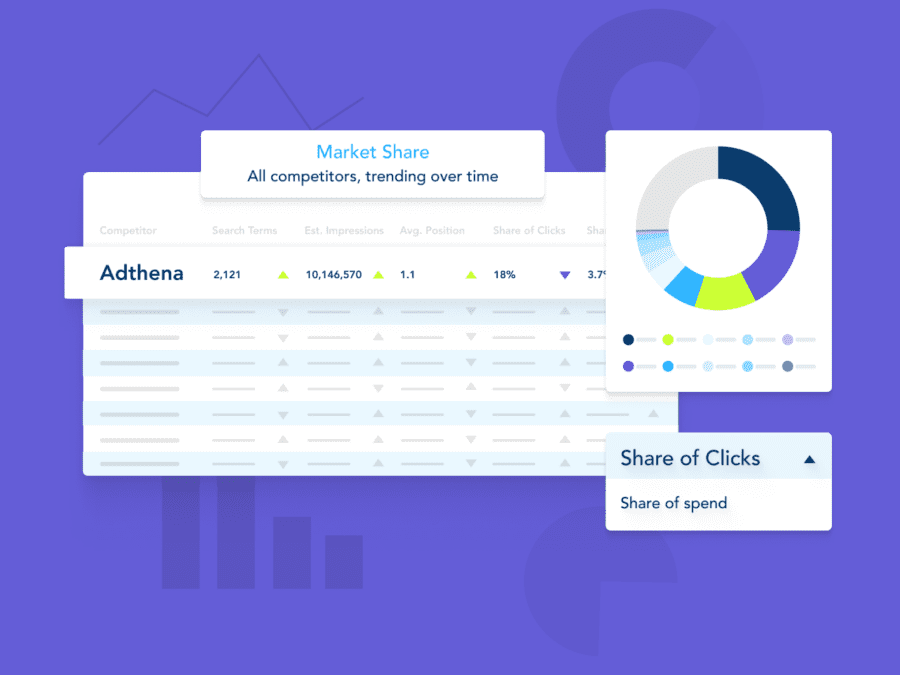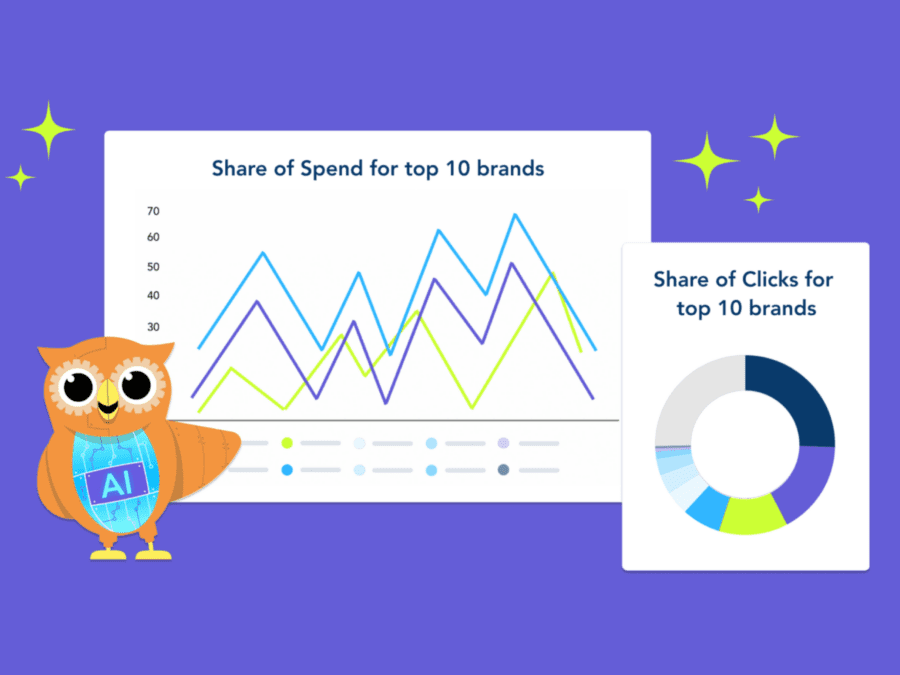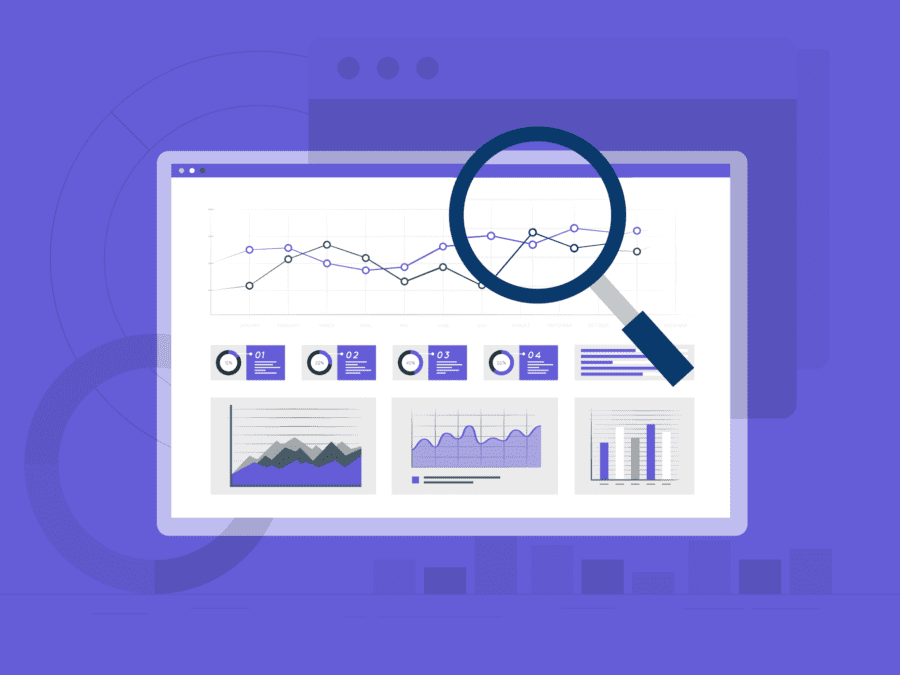Search marketing in Pharma is unlike any other industry. Compliance is tight. Ad approval timelines are long. And innovation can feel just out of reach. But change is here, and it’s coming fast. With AI transforming the way we strategize, target, and deliver campaigns, Pharma marketers are finding new ways to scale performance while staying within the lines.
To understand how these shifts are playing out on the ground, we sat down with Mike Kowlowitz, Director, Search Engine Marketing at CMI Media Group, along with Adthena’s Tom Larkin and Mery Hayles. Their conversation covers everything from AI adoption and Performance Max to creative approvals and the rise of consumer empowerment in healthcare.
Here’s what Pharma PPC looks like now and where it’s headed next.
AI Adoption: A game changer for strategy and scale
Tom: How has the adoption of AI impacted your marketing strategies, particularly relating to PPC and search?
Mike: The adoption of AI has been a complete game changer. We now spend more time strategizing rather than focusing on manual optimizations, which has been really important, especially when it comes to targeting expansion. A great example is the improvement of broad match, which now allows for more qualified reach, something very much powered by AI.
Then there are keyword list targeting options, such as those used in Performance Max (PMax), that help drive additional scale. These AI strategies have made it possible to deliver more efficient performance and stronger KPIs without needing to build campaigns manually.
If you remember the old days of using giant, labor-intensive bulk sheets for keyword uploads, you’ll know how much of a relief this is. That’s thankfully no longer the case. AI has also been a huge help in getting the most out of our creative assets, particularly with responsive search ads. Being able to mix and match headlines and descriptions to find the perfect creative and message for the right user at the right time has been incredibly powerful.
We’re leveraging both platform tools and some of our own internal tech to make the most of this evolution.
Pharma’s biggest paid search hurdles
Tom Larkin: What are the biggest challenges you’re seeing within Pharma right now?
Mike: Pharma marketers face unique challenges that other sectors don’t have to deal with. For example, creative and keyword targeting must be approved by legal teams instead of just brand managers, which slows down our go-to-market timelines.
Google also restricts our use of first-party audiences, meaning we can’t run search remarketing or customer match campaigns. That’s a big limitation, especially since newer ad formats like PMax depend heavily on those signals.
Inside the creative and compliance workflow
Mery Hayles: Can you walk us through what the ad approval process looks like if you want to test different ad copy?
Mike: For compliance, we work closely with our brand contacts and stay aligned with best practices. We consult with brand managers and legal early in the process, crafting ad copy and keywords based on those discussions. Then we go through legal approval, incorporating feedback to adjust where needed.
The whole process, from concept to go-live, typically takes about a month to a month and a half. It involves collaboration with legal, brand, and all relevant stakeholders.
Making ad copy work harder, even within limits
Mery Hayles: Let’s stick with ad copy for a second. How do you make it engaging while still complying with regulations and working within tight character limits?
Mike: Of course, strict compliance is just part of the deal in Pharma. But we always try to improve our messaging. For instance, we test different styles such as action-oriented messaging versus lifestyle, and various calls to action. We monitor performance closely, phasing out underperformers and iterating on what works.
We also collaborate with our cross-channel teams. We look at what’s performing well on social or programmatic and bring those insights into our search campaigns, and vice versa. It’s all about cross-pollinating the best ideas.
That kind of agility is essential in a space as competitive as Pharma. Adthena’s PPC Market Share reports provide a helpful lens into the current creative landscape, showing how top advertisers are using text ads to stand out while staying compliant.
Take a look at two examples below, where leading Pharma and Biotech brands demonstrate how different positioning strategies can be communicated clearly within strict ad copy constraints.
Pharmacology – US Pharma & Biotech: Google Text Ad Insights

Adthena’s PPC Market Share reports: Google Text Ad Copy Insights & Creative Trends for US Pharma & Biotech Research and Development
Competitor A ad highlights life-changing health tech innovations, while Competitor B emphasizes blending heart, science, and ingenuity. Competitor C focuses on immune system support for blood cancers. Competitor D showcases medical research, and Competitor E offers comprehensive patient resources.
For Pharma marketers, these kinds of insights are more than just a snapshot of competitor activity. These insights show that even in a tightly regulated environment, Pharma brands can still craft compelling, differentiating ad copy and test new positioning with confidence that aligns with both legal requirements and patient needs.
Safety messaging in responsive search ads
Mery Hayles: Do you have any best practices around how to display safety information in ads, especially with Responsive Search Ads (RSAs)?
Mike: That’s usually brand-specific. In some cases, we’ve had to pin disclaimers to the top of responsive search ads. Ultimately, it depends on what each brand and their legal team is comfortable with. But broadly, we’re constantly evaluating headlines and descriptions, optimizing based on performance, and iterating from there
Changing consumer behavior and Pharma CPCs
Mike: It definitely varies by industry, but on the DTC side of Pharma, we’ve seen an uptick. Consumers today are more proactive and informed; they’re researching treatments on YouTube, Googling symptoms, and taking more control over their healthcare journey.
The rise of consumer empowerment
Tom Larkin: That reminds me – someone mentioned recently that people are using Reddit more to research drugs and experiences.
Mike: Absolutely. We’ve noticed that too; users often append “Reddit” to their search queries, like “medication name Reddit.” Our Search team even bids on Reddit-related keywords to capture demand from this trend.
It goes back to this theme of consumer empowerment. People now have access to so much information on Reddit, endemic sites, wearables like FDA-approved EKG devices. That tech is helping people take their health into their own hands.
Looking ahead: Where Pharma PPC is headed
Tom Larkin: Where do you see PPC and search marketing heading in Pharma over the next five years?
Mike: A few things. First, attribution models will get more precise and more meticulous in Pharma. We’ll be able to track the journey from doctor visit to prescription with more clarity. This will also apply to HCPs and their prescribing behavior; I think we’re going to have greater insight into consumer behavior from interacting with an ad all the way to downstream purchases.
Second, video will become even more prominent. Looking at advertising data, brands are starting to use video more as a vehicle to engage with potential customers. We’re already seeing more interest in YouTube among DTC clients, and we’re starting to activate YouTube campaigns, so I think that trend will continue.
Third, we’ll see more use of visual elements: logos, image extensions, and visually rich ad units like PMax and Discovery. Google’s starting to follow Meta and TikTok in that regard.
Lastly, contextual keyword targeting will rise, especially as third-party data becomes harder to access. Partners that support contextual strategies will become more valuable.
Final thoughts for Pharma marketers
As Mike shares, Pharma marketers operate in a world where every keyword, message, and ad unit must balance compliance and creativity, while adapting to rapid advancements in AI, shifts in consumer behavior, and changes in search platforms.
Thanks to insights like these, the path forward is becoming clearer: success in Pharma PPC will rely on strategic data use, cross-channel thinking, and early adoption of tools that turn complexity into clarity.
To book learn more about your specific challenges and to view the Adthena platform, book a personalized demo today.





